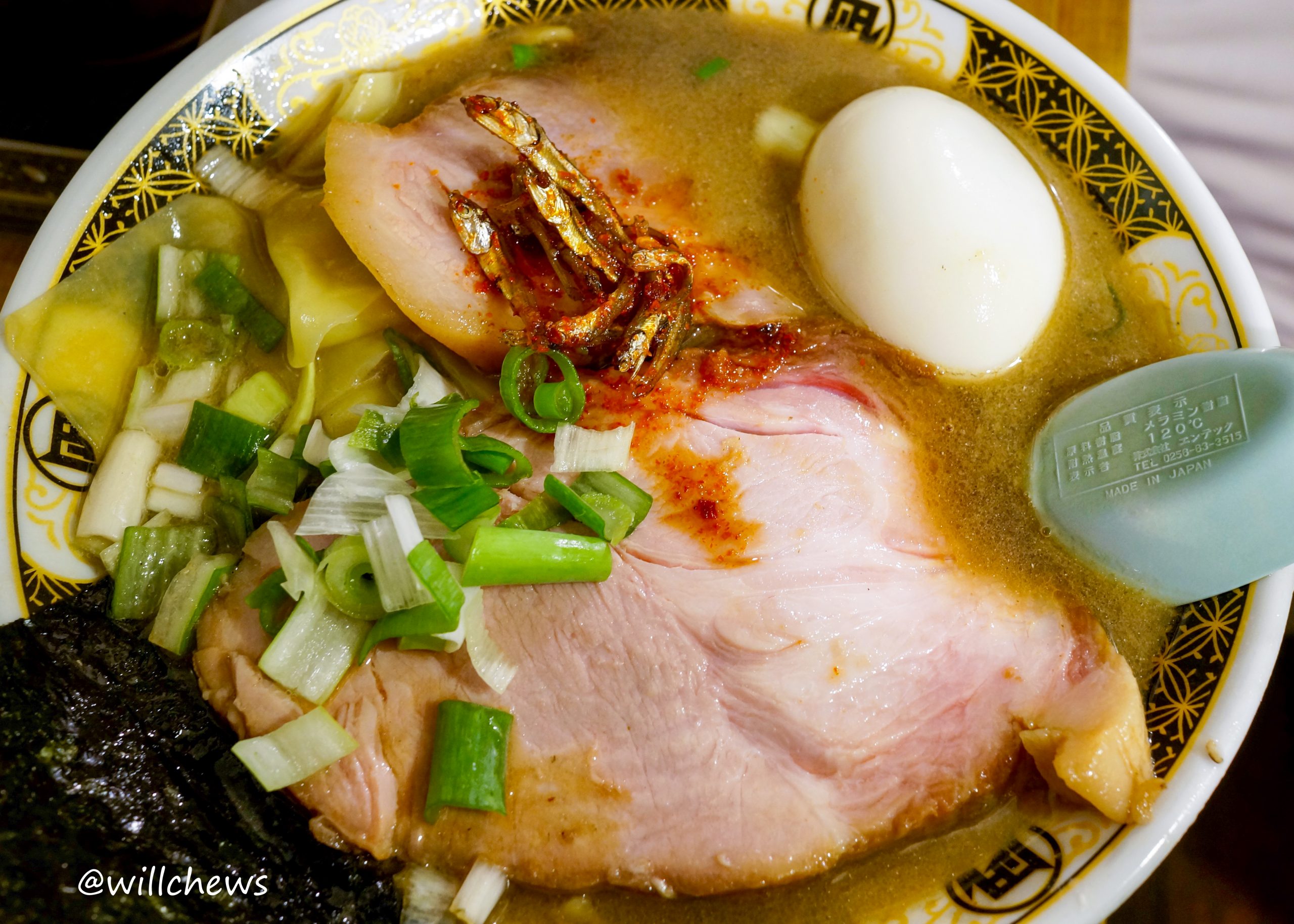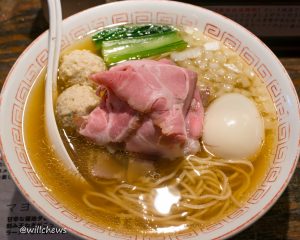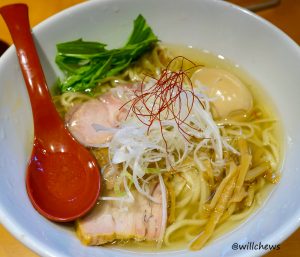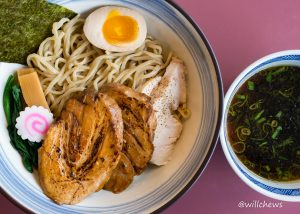Few non-chain Japanese ramen shops have been written about more extensively than Nagi Golden Gai, the niboshi specialist located on the second floor of a shack-like building in the Golden Gai area of Shinjuku’s Kabkukicho red-light district. Foreign ramen enthusiasts seem to gravitate towards novelties and excess, and Nagi does that as well as any. Its popularity and success means that in the space of about a dozen years, it has expanded to dozens of locations around the world. Despite my own mixed feelings about the ramen Nagi makes, its own story is quite inspirational.
Back in the early 2000s, Nagi’s founder Ikuta Satoshi was working for the ramen chain Ichiran in Tokyo. According a profile he did in a series on ramen chefs, Ikuta was inspired to forge his own path after seeing the endless rows of independently-operated restaurants in New York. He left Ichiran in 2004 and started Nagi inside a Golden Gai counter bar where he initially offered ramen every Tuesday and later expanding to twice a week. Early on, he declared that his ambition was to “make the best tonkotsu ramen in Japan,” and to “beat Kawahara Narumi of Ippudo” of Hakata-style tonkotsu fame. Everything was touch and go early on: his first customers were his friends; recipe improvements depended on bar patrons’ feedback; and Nagi only offered two kinds of ramen, a tonkotsu bowl and an experimental “creative” bowl. His big break occurred in 2006 when he opened a split-menu shop in Shibuya offering tonkotsu ramen by day and creative ramen at night. He eventually translated this success into a returnto Golden Gai where the honten for Nagi stands to this day.
Nagi is all about excess and is very polarizing; you either love it or hate it. The flagship niboshi bowl is a kotteri broth made from baby sardines, mixed with rich shoyu and combined with a pork base stock. It’s loud, strong-smelling, punchy, incredibly salty, with acrid-bitter flavors and aromas emanating from the long-boiling niboshi. It’s a bold, confident, and unapologetic ramen that asserts its identity by placing a few niboshi on top of the bowl for added effect. But I still think its excesses are overly self-indulgent and make little gustatory sense, an achievement badge than anything else.
Other components are less problematic. The thick-cut pork chashu is really standout: one of the thickest I’ve ever had in a bowl, juicy and meaty in way that is almost primal. An additional slice is only 100 yen and worth the price if you’re hungry or love a good deal. During my visit I didn’t think the noodles were particularly notable, but Ramen Beast points out that Ikuta now has his own noodle factory in Shinjuku, and Ramen Guide Japan describes the two types: a crinkly “thinner” noodle that is actually quite thick by any normal standard, and a “wide” noodle that is rather reminiscent of wonton skin. I don’t think wide noodles work well in soup, so I went with the thinner ones, which I thought were well made but were an overly efficient delivery system for salty broth.
Other components are less problematic. The thick-cut pork chashu is really standout: one of the thickest I’ve ever had in a bowl, juicy and meaty in way that is almost primal. An additional slice is only 100 yen and worth the price if you’re hungry or love a good deal. During my visit I didn’t think the noodles were particularly notable, but Ramen Beast points out that Ikuta now has his own noodle factory in Shinjuku, and Ramen Guide Japan describes the two types: a crinkly “thinner” noodle that is actually quite thick by any normal standard, and a “wide” noodle that is rather reminiscent of wonton skin. I don’t think wide noodles work well in soup, so I went with the thinner ones, which I thought were well made but were an overly efficient delivery system for salty broth.
I’m generally a fan of lighter-bodied assari ramen, but I can appreciate good, rich-bodied kotteri styles like tonkotsu-gyokai. But in this case, Nagi’s extreme characteristics obscure its strengths. It’s a very acquired and niche taste that performatively indulges in excess for its own sake. Nagi is worth a visit a visit, but I strongly recommend ramen novices not to make it the only shop they visit in Tokyo as they will end up with a distorted view of ramen. Making Nagi one over several ramen shop visits will provide much broader and deeper perspective.
Q Factor: 10 minutes (Weekday, 1915)
Sense: A niboshi seige of the five senses
Price: Special Niboshi Ramen (¥1100)
すごい煮干ラーメン凪 新宿ゴールデン街店 本館 (Sugoi Niboshi Ramen Nagi Shinjuku Golden Gai-ten Honkan)
〒160-0021 東京都新宿区歌舞伎町1-1-10-2F
Stations: Shinjuku San-chome, Shinjuku Station (Marunouchi, Fukutoshin Line, Shinjuku Line, plus all the lines that go to Shinjuku Station itself)



